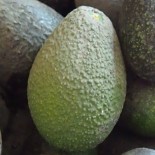Polish girl living in Chile with Chilean family
Simple diary made by Polish girl living in avocado capital of Chile describing living in Chile, with Chilean family, adjusting to the culture, language and differences
Piure
Seafood varieties you can find here in Chile is amazing. I am still confused and have huge difficulties with recognizing each of them. But there is one of these ocean monsters that has recently driven my attention. I was visiting Southern Part of Chile lake region and its famous island Chiloe. Walking around local market I spotted many varieties of dried seafood such as shrimps, small clams, mussels and probably their other cousins that I am unable to recognise. They were hanging attached to special strings made of some kind of weed and sold for something between 1000 and 3000 pesos each! Among these seafood strings there were also red one. I though, oh they are also selling small red peppers. So I did not pay much attention to it until one of the selling ladies started to saying names of recommended dried foods. I heard “piure”. Well, I remember watching his food in the Mercado Central and it was on my liste of seafood to try. So I bought a bunch of ‘red peppers’ like I though before for 2000 pesos.
So what is piure, or its official name Pyura chilensis. Sometomes called the living rock. It is weirs ocean creature that lives on the rocky coast of Chile and Peru. From the outside it is just a rock, but when you cut it a red eyes just like from horror movie appears. From the inside it looks like a egg plate (special plate with egg size holes) but instead eggs there are red bizarre looking creatures. When dried they look like small red peppers.
Piure belongs to the Ascidiacea class of non-moving, sac-like marine invertebrate filter feeders that are otherwise known as sea squirts. It has two siphons that connect the animal to the surrounding ocean through its tunicin – one for exhaling and one for inhaling. It eats by inhaling the water and filtering out the edible microalgae through a pair of siphons. They have clear blood and, strangely, can accumulate very high quantities of mysterious rare element called vanadium. The concentration of vanadium in the blood of piure can be up to 10 million times that of the surrounding seawater. It still remains unknown just why and how these creatures are able to accumulate vanadium in such huge quantities.
So how piure is eaten?
The meat, which has a strong flavor, can be eaten raw or cooked. Its taste has been described as like that of iodine or “something like a sea urchin though less delicate in flavor” and a “slightly bitter, soapy taste”. It is usually cut into small pieces, and flavored with chopped onion, cilantro, and lemon. Minced and boiled, it serves as an element of many dishes, particularly arroz con piure picado, or “rice with minced piure” (Wikipedia). It can also be fried and eaten on bread. You can also eat them dried but also in a form of ceviche.
I personally did not like it much at least in the dried form. The taste is insipid and smell very fishy and strong.I hope to try it raw or in salad maybe they are real delicacy.
Have a look at the movie below where Andrew Zimmern explores local Mercado Central and taste it raw.




